A tribute to a Golden Age stalwart…
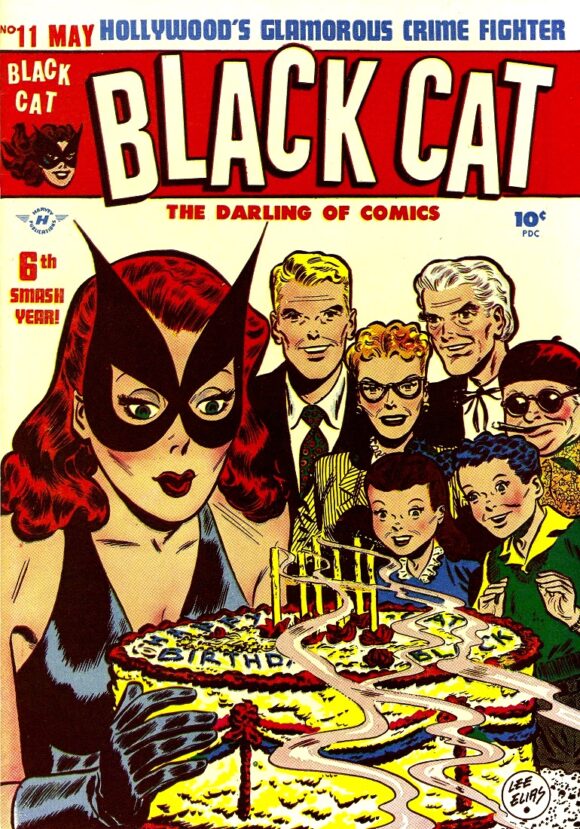
A great birthday cover by Lee Elias for Black Cat Comics #11 (May 1948) — but now it is for Elias himself.
By PETER BOSCH
Leopold “Lee” Elias (born May 21, 1920) drew many heroes during his 40 years as a comic book artist, including the Golden Age Flash, Tommy Tomorrow, Adam Strange, Green Arrow, the Justice Society of America, the Human Fly, and Power Man. However, none of those assignments had a more long-lasting fan appreciation than his work on Black Cat for Harvey Comics.
The original Black Cat – many years before Marvel’s Jenny-Come-Lately Felicia Hardy – was an adventuress who fought crooks in Hollywood. She was secretly movie actress Linda Turner, who put on a black bathing suit, gloves, pirate boots, and a mask, to use her martial arts skills, as well as her training as a former stuntwoman, to fight criminals and to help others.
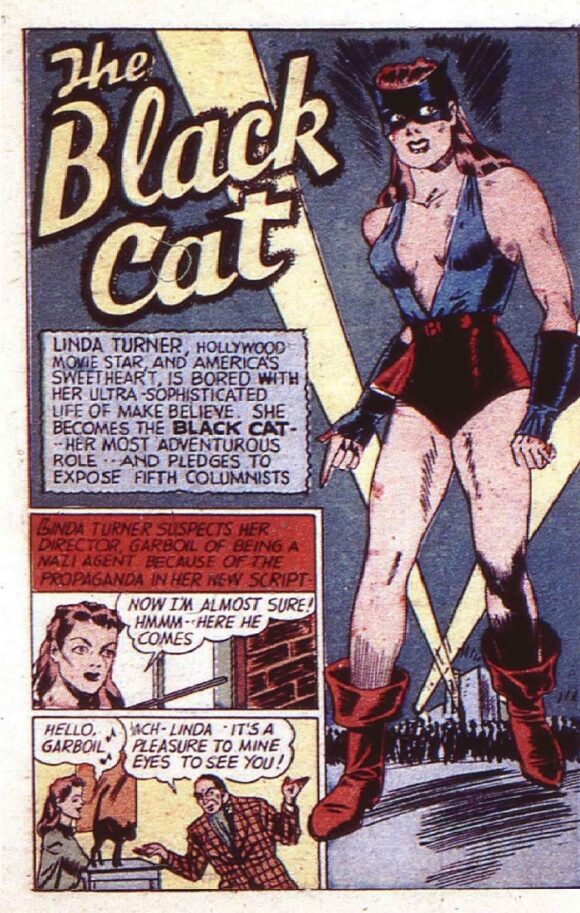
The first appearance of the Black Cat and Linda Turner, from Pocket Comics #1 (Aug. 1941). Al Gabrielle art.
The “Darling of Comics” made her debut in Pocket Comics #1 (Aug. 1941, Harvey Publications) in a story where Linda realized a Hollywood film director was a Nazi agent. She got the idea for the design of the costume when a black cat suddenly leapt at the director’s face. (Not too dissimilar from when a bat flew into Bruce Wayne’s study.)
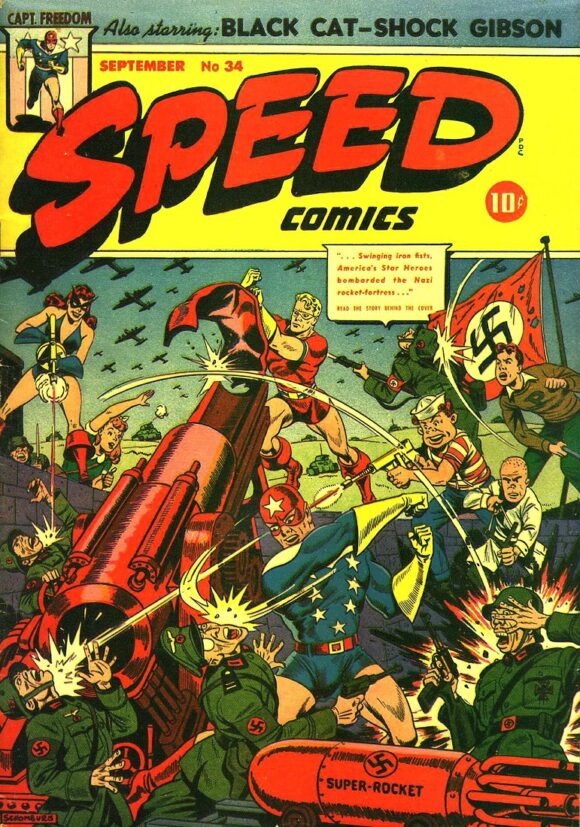
Speed Comics #34 (Sept. 1944). Alex Schomburg art.
After the cancellation of Pocket Comics with the fourth issue, Black Cat was moved over to Speed Comics for the remainder of World War II, as well as appearing in a few issues of All-New Comics. She became Harvey’s most popular character and, in 1946, was given her own series, Black Cat Comics. However, the first issue (June-July 1946) consisted of material that had been originally announced to appear in Speed Comics a year earlier and, thus, the stories were still set during World War II.
Overall, that was a poor start for Black Cat’s own comic book. Enter Lee Elias!
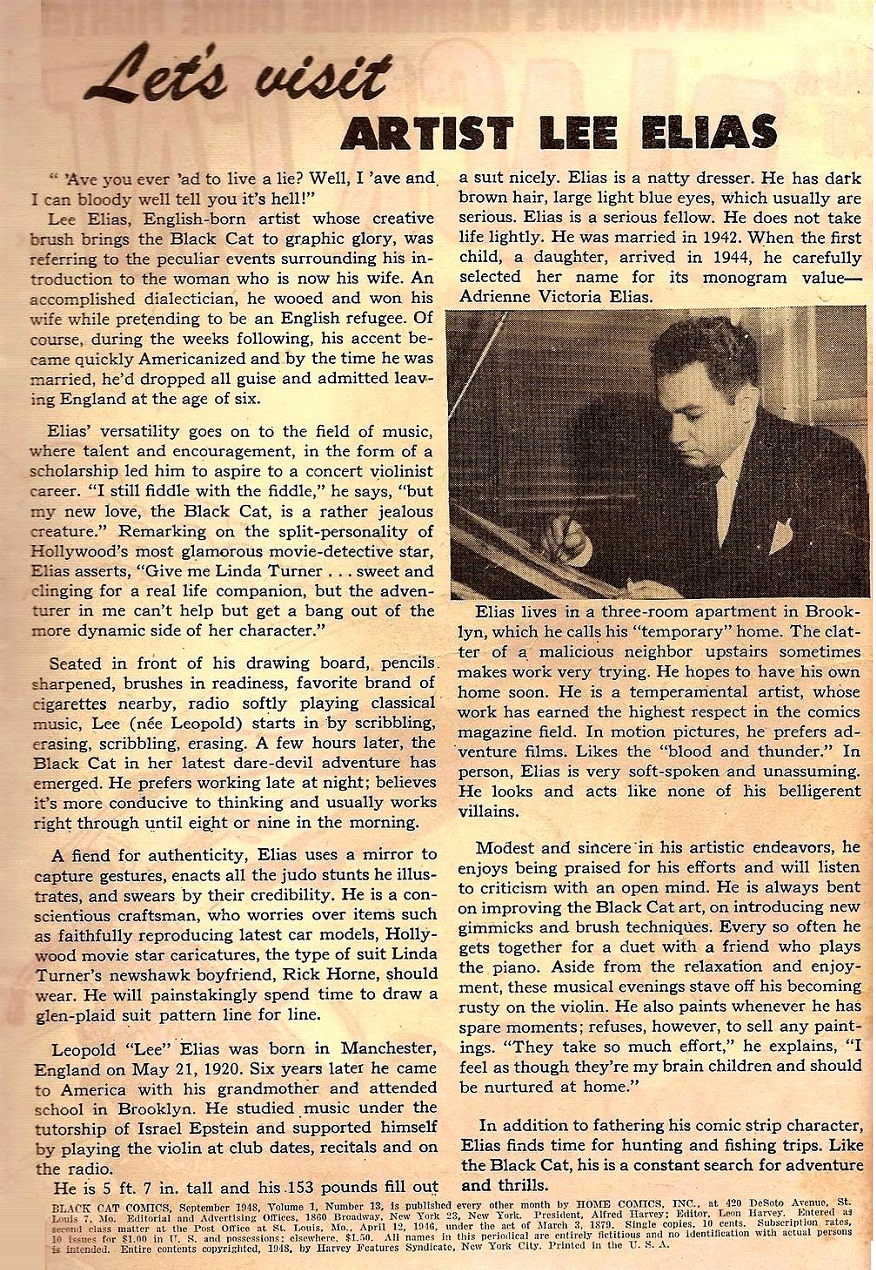
Bio of Lee Elias from Black Cat Comics #13 (Sept. 1948).
Elias had broken into comic books in 1943, working frequently at the time for Fiction House, as well as drawing a couple of Sub-Mariner stories for Timely. He was brought in for Black Cat Comics #2 (Aug.-Sept. 1946) and the whole look of the comic improved greatly. Elias provided strong panel layouts and detailed scenes, along with a solid drawing style (similar to that of Milton Caniff).
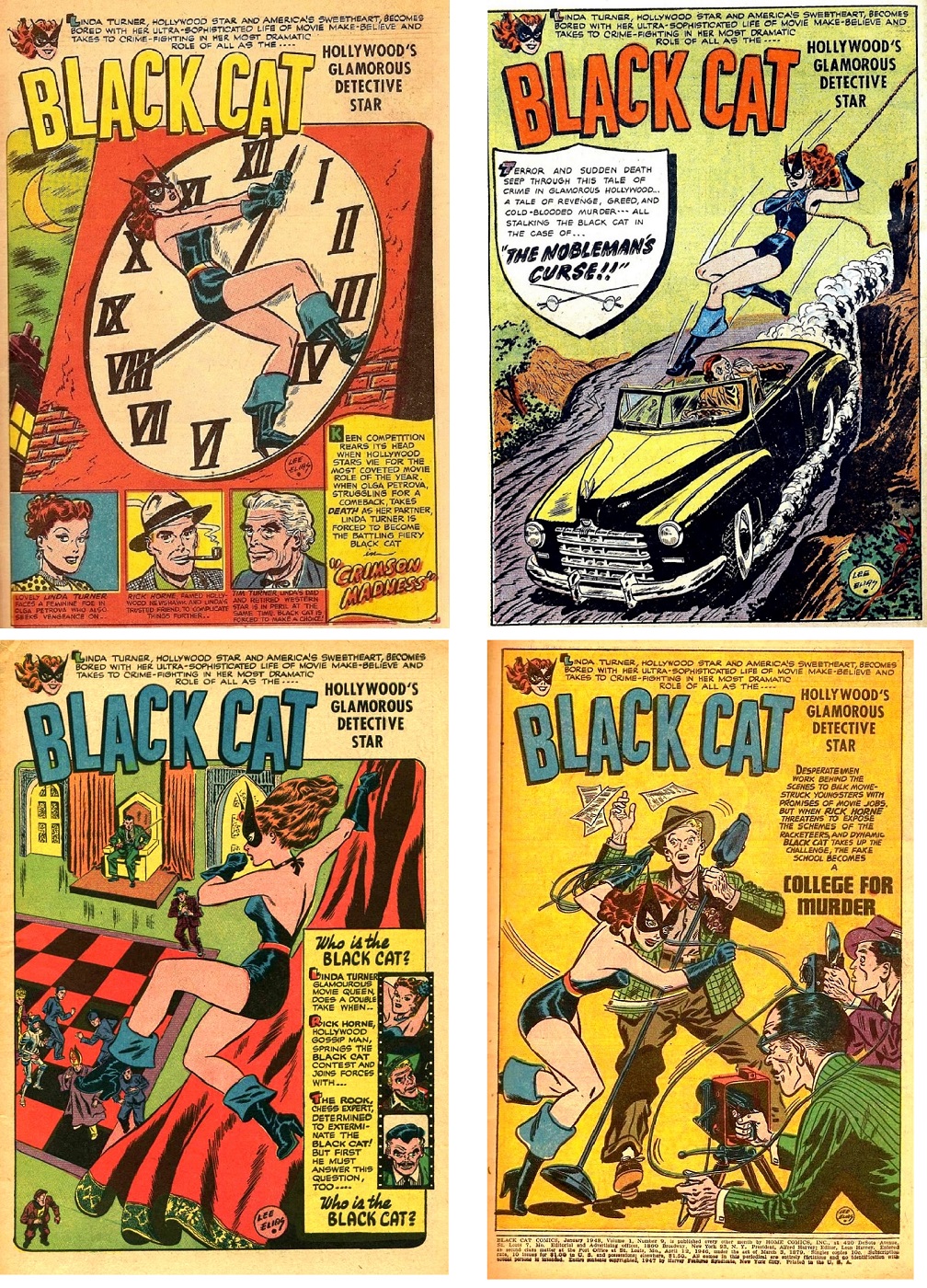
A selection of splash pages by Elias.
In addition to the art, there was also an improvement in the writing in that issue due to the introduction of new characters that formed Linda Turner’s Hollywood base. The most important of these was Tim Turner, Linda’s father. Tim was a former silent screen Western star and he had taught her many skills, including riding and roping. He was the only person in on her secret.
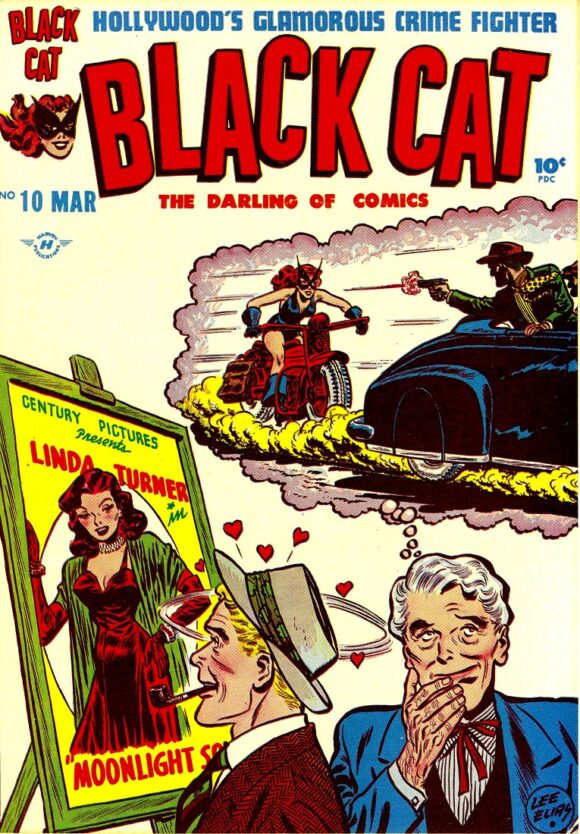
Rick Horne and Tim Turner. Elias capturing love and humor on the cover of Black Cat Comics #10 (Mar. 1948).
Another character of importance to Linda/the Black Cat was newspaper columnist Rick Horne, who had been around since Pocket Comics #1. Rick was never afraid of a fight with a bad guy, but he did have a weakness. He was infatuated with both Linda and Black Cat, not aware they were the same person, and he was worried that one or the other would discover he was romancing them both. His naivete was wonderful comedy relief in the stories.
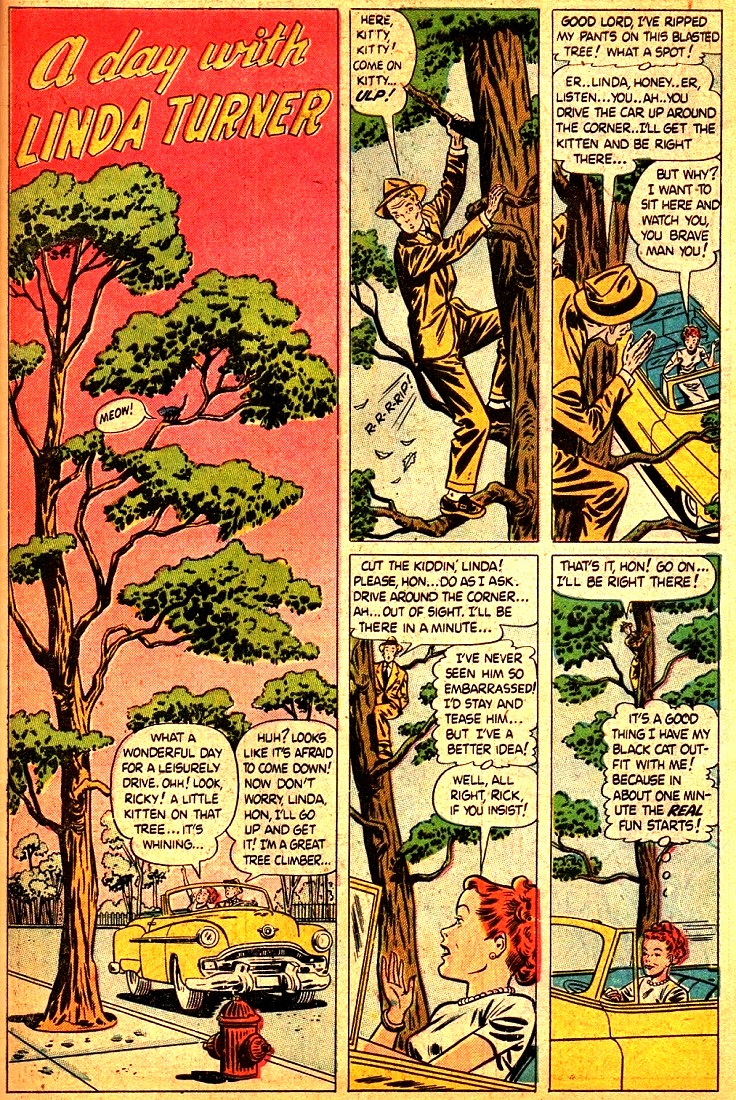
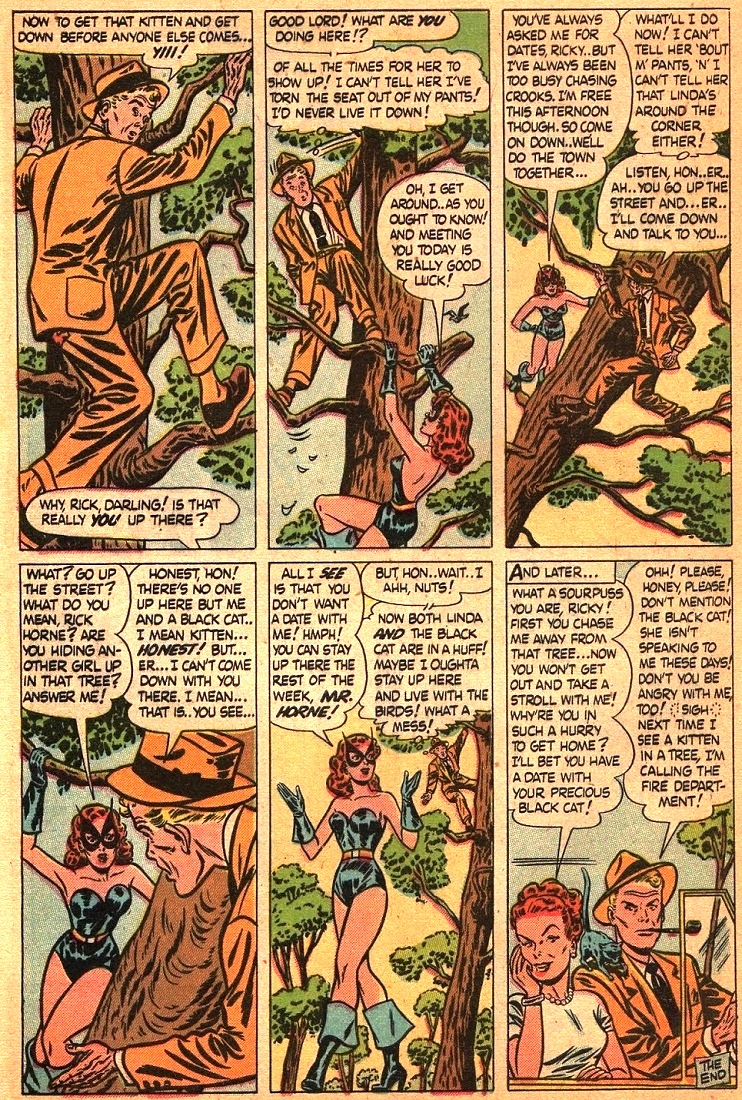
(Speaking of stories, Harvey never officially gave credit in the comics to the scripters. Only Bob Haney is known with accuracy to have worked on some of the stories, including the “College For Murder” tale in Black Cat Comics #9, January 1948, which was his first published work.)
To say the Black Cat stories were enjoyable is a vast understatement. The comic book would also cut through the fourth wall starting with #7 (Aug.-Sept. 1947) when the Black Cat began teaching judo tricks to the readers. It was a popular feature and there were about 20 lessons in total over the following issues, with Elias drawing them all.
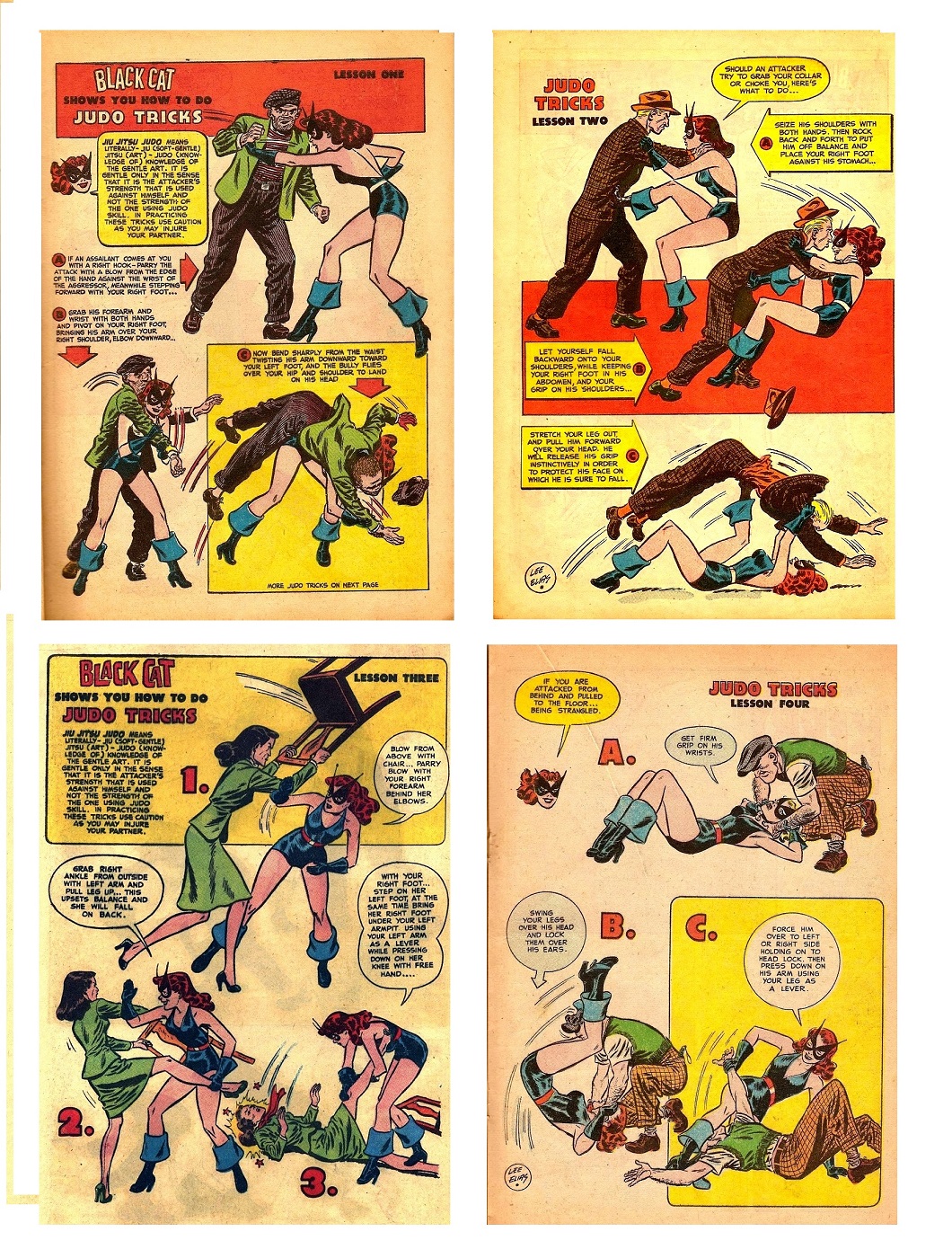
Images of Hollywood celebrities appeared often in the Black Cat stories, all drawn with accuracy by Elias. In addition, several issues had special features of Rick Horne interviewing real film stars.
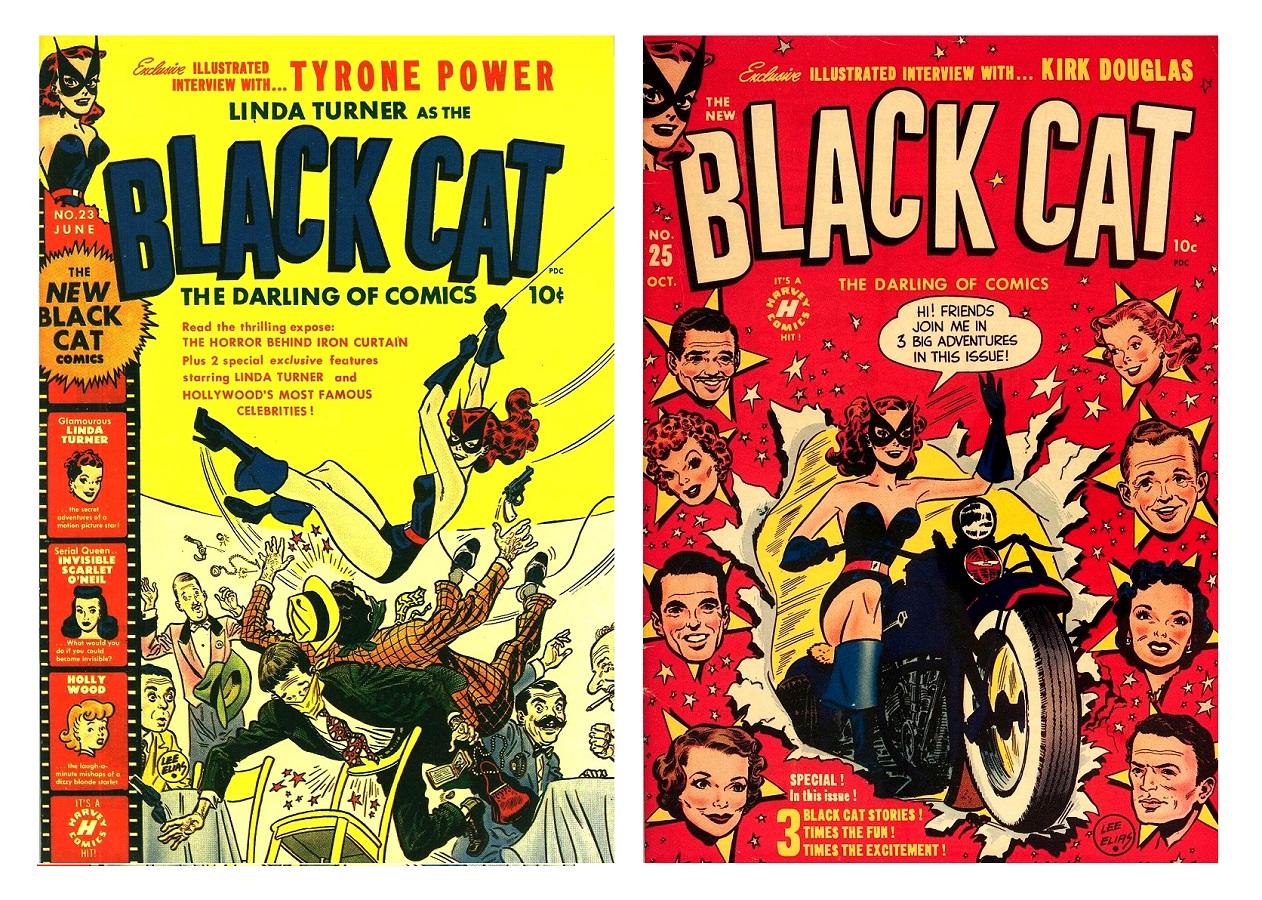
Hollywood celebrities drawn by Elias were part of many Black Cat stories. Black Cat Comics #23 (June 1950) and #25 (Oct. 1950).
Regrettably, the good times came to an end after the 29th issue (June 1951). Like other publishers at the start of the 1950s, Harvey moved away from costumed heroes and switched to horror stories. With the 3oth issue (Aug. 1951), Black Cat made one last new appearance, and that was just on the cover and the story contents page. Elias continued to draw for Harvey for a few more years, as well as taking on a newspaper comic strip from 1952-55 with science-fiction author Jack Williamson, Beyond Mars.
Black Cat did return in issues #54 through #56 (Feb. 1955 to Oct. 1955, respectively) but they contained only reprints of Elias’ past stories. Harvey switched to (non-BC) supernatural tales in #57 (Jan-Mar. 1956) and the series was cancelled after the release of #62 (Mar. 1958). By this time, the title of the comic had become Black Cat Mystic.
(During that 62-issue run from between 1946 and 1958, the cover logos changed so often that they used up all nine lives of a cat. At various times, it was called: 1. Black Cat Comics, 2. Black Cat Western, 3. Black Cat Western Comics, 4. Black Cat, 5. The New Black Cat, 6. Black Cat Mystery Comics, 7. Black Cat Mystery, 8. Black Cat Western Mystery, and 9. Black Cat Mystic.)
However, it was to be a temporary cancellation. In 1962, costumed heroes were back on the rise and Harvey resurrected the title for three more issues, from #63 (Oct. 1962) to #65 (Apr. 1963). All were 68 pages each, and all had the Black Cat herself – but again these were all reprints of Lee Elias-drawn stories.
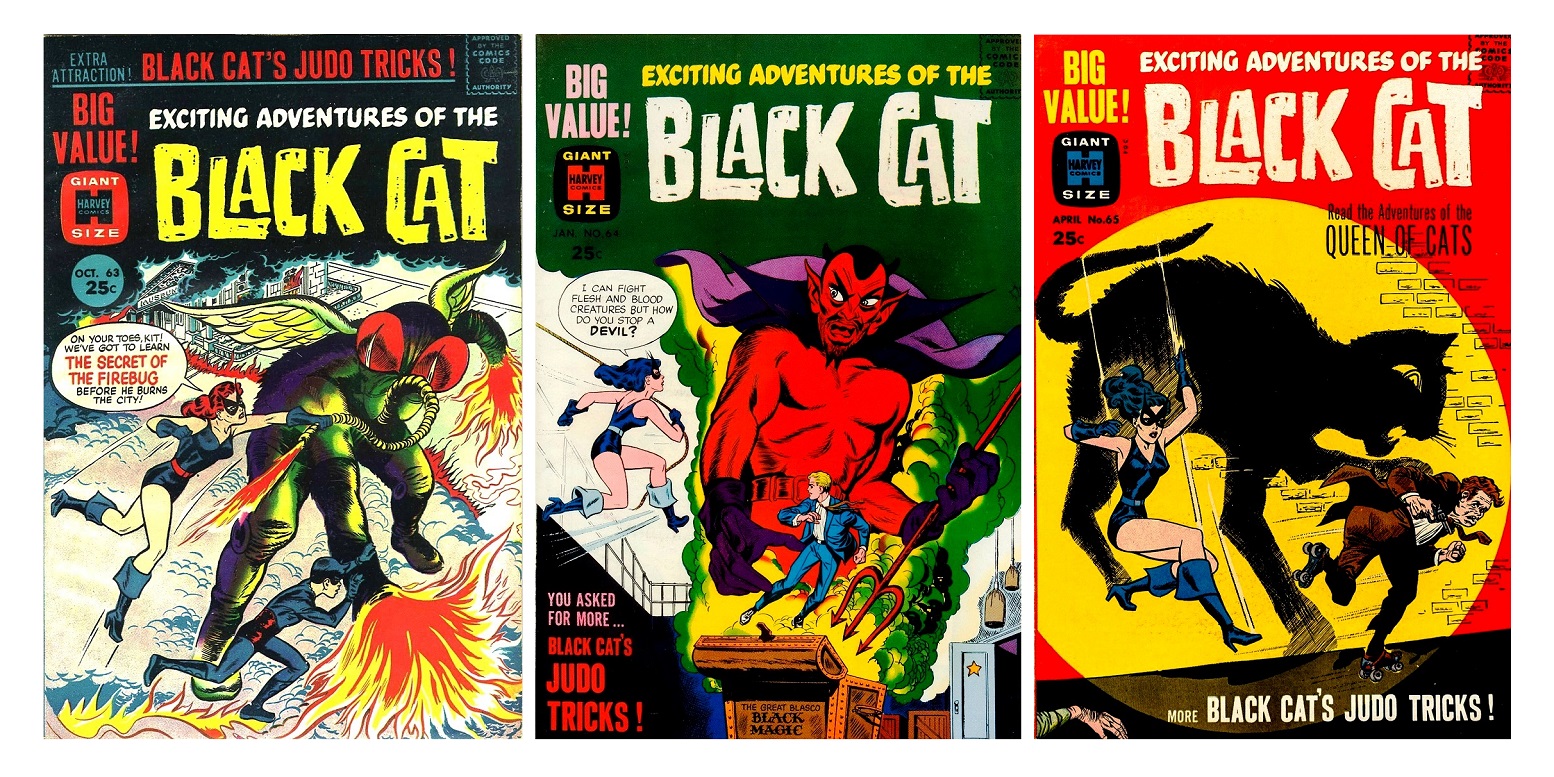
Silver Age Black Cat #63-65 (Oct. 1962 to Apr. 1963). On the cover of #63 is Kit, a sidekick introduced in Black Cat Comics #28 (Apr. 1951).
In the meantime, Elias was now working for DC Comics (since 1959), where he turned out thousands of pages through 1976 for their superhero, science fiction, mystery, and war titles. (During this time, he was reunited with Bob Haney and the pair created the villainous Eclipso.) Elias left DC in 1976 and went to work for Marvel until 1979, and then he drew for Warren Publishing through 1982, at which time he retired from comics. Elias then became a teacher at Burne Hogarth’s School of Visual Arts and at the Kubert School.
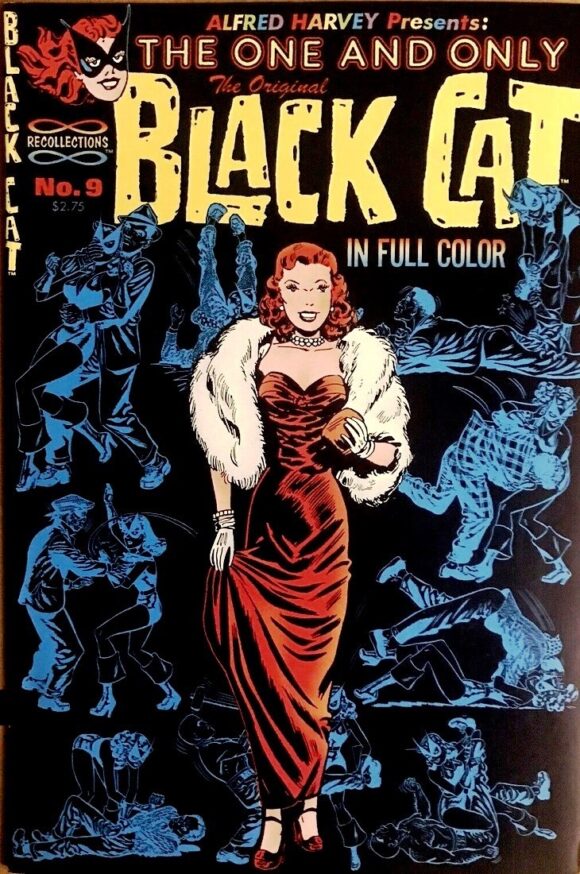
The Original Black Cat #9 (1992, Lorne-Harvey). Note the judo tricks in the background.
From 1988 to 1991, the Harvey family reprinted Elias’ stories in their 10-issue series, The Original Black Cat. In 1995, Lorne-Harvey created a new series, Alfred Harvey’s Black Cat (The Origins), in which a modern-day movie stuntwoman, fascinated by the Black Cat, took up the disguise. That first issue, which also contained Elias reprints, was written by Mark Evanier and drawn by Murphy Anderson. Unfortunately, it never had a second issue. (The story and its unprinted conclusion are available for viewing free of charge on Lorne-Harvey’s Black Cat Comics website.)
A few years later, Lee Elias died at the age of 77 on April 8, 1998.
—
MORE
— 13 BLACK CAT COVERS: It’s Friday the 13th! Click here.
— 13 BLACK CAT COVERS to Make You Purr. Click here.
—
13th Dimension contributor-at-large PETER BOSCH’s first book, American TV Comic Books: 1940s-1980s – From the Small Screen to the Printed Page, has just been published by TwoMorrows. He has written articles and conducted celebrity interviews for various magazines and newspapers. Peter lives in Hollywood.


May 21, 2023
I could really use a restored “Best of” collection of the Black Cat on my shelf. The PD publishers serve a purpose, but the Black Cat deserves a quality treatment over those yellowish, dingy scanned reprints.
May 22, 2023
Thanks for this great spotlight, Peter and Dan. Lee Elias is one of my favorite classic artists, who I feel is vastly underrated. I really need to read some more Black Cat adventures. Obviously her costume and general character influenced a lot of heroes who followed (like Black Canary).